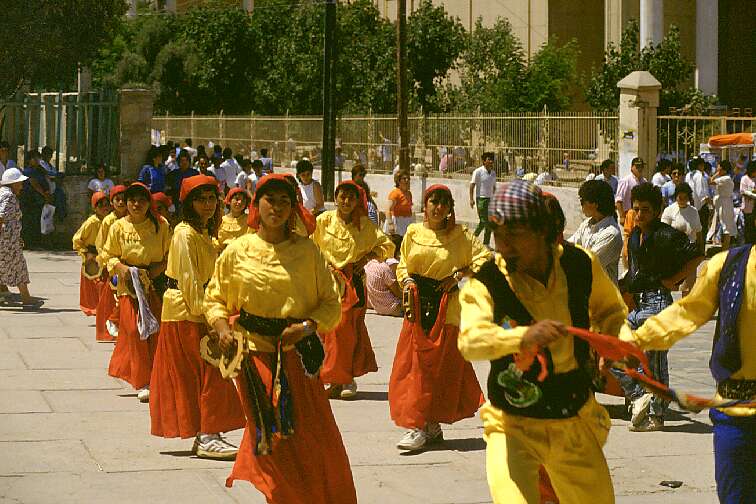

Andacollo is a small mining town of pre-Columbian origin located in the mountains near Coquimbo in Chile. Other than for its gold and copper mines, it is known for its peculiar religious celebration of december 26th, when thousands of pilgrims meet with many hundred dancers in a swirling feast of color.
The legend has it that in the 16th century, when the recently founded town of La Serena was run over by the natives, a Spanish priest fleeing into the mountains took with him a figurine of Mary. Exhausted and unable to carry it further, he buried it in an old gold dig. The priest was never again heard of, but years later a native miner looking for gold happened to discover the figurine. Freshly converted by a new wave of missionaries, the man took it for a miracle, and founded a chapel at that location. The chapel grew into a church, then a cathedral, and once a year a celebration is held in honor of the blessed virgin.
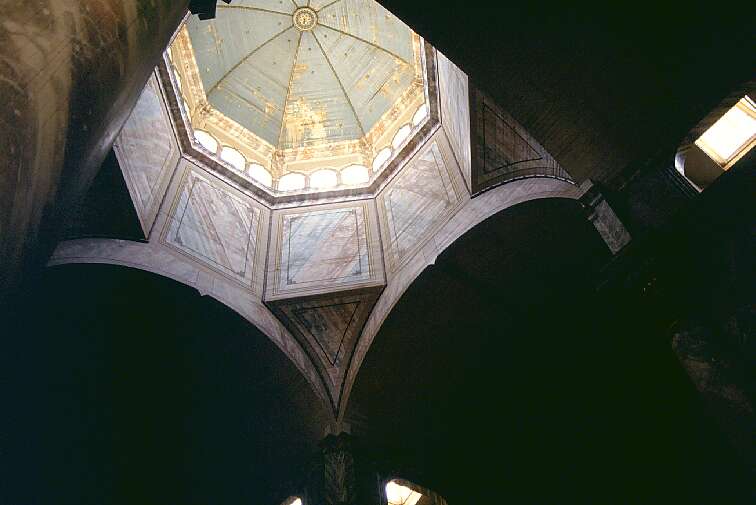
The present large cathedral was built from wood, and finished for the celebration in 1893. It is one of the great pieces of wooden architecture in Chile. It can hold 10,000 people. A smaller and much older church is located close to it, which also contains a museum with large amounts of memorabilia.
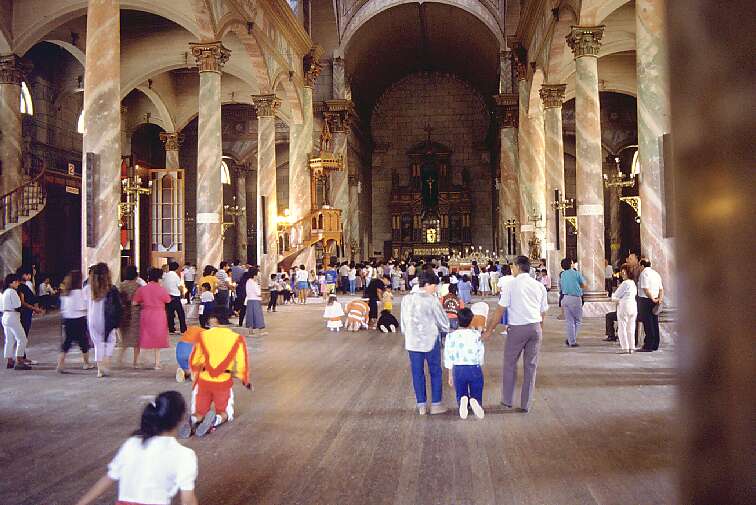
Pilgrims come from all places, to bring their reverence, thanks, and ask for favors. Many of them walk all the way from La Serena or Coquimbo, a distance of roughly 56 km including a very steep switchback climb that takes wanderers more than 1000 meters high into the mountains. The people start the trip in the late afternoon and walk through the night to escape the searing summer sun in the desert. Many stay for the whole three days the celebration lasts, december 24th to 26th, even if the main events take place on the 26th.
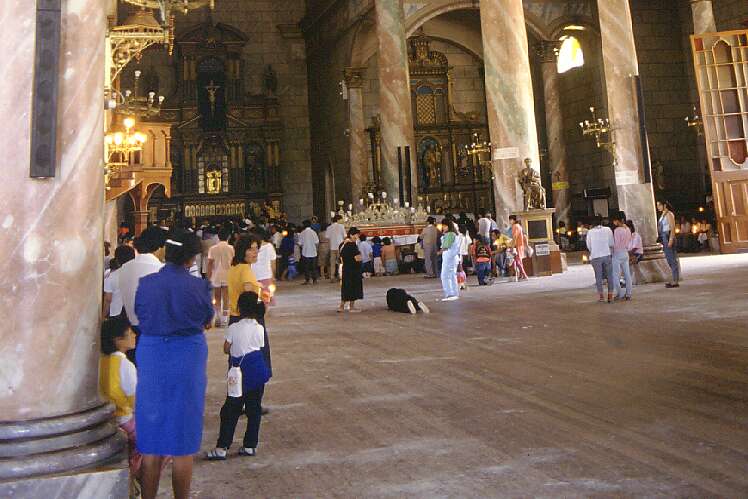
Faith knows no limits. Many people make their
entrance into the temple on their knees and elbows. But some go so far
as to make several kilometers, or even the entire trip that way! Regardless
of what one's own convictions may be, few people can escape the sense of
admiration
The floor of the cathedral is thickly covered
in wax that has dripped from millions of candles over many years.
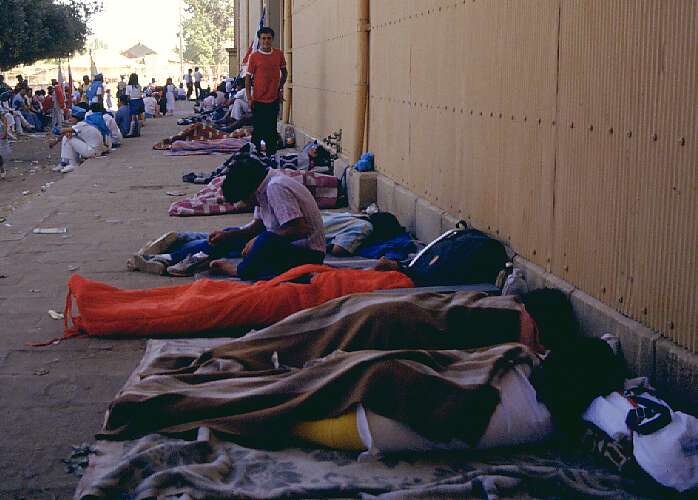
There is no hope to find accommodations for the many thousand pilgrims in the small town. Even if every single house is filled to the brim with people, many have to be content with a shady spot aside the cathedral, where they can extend their sleeping bags and recover from the long walk.
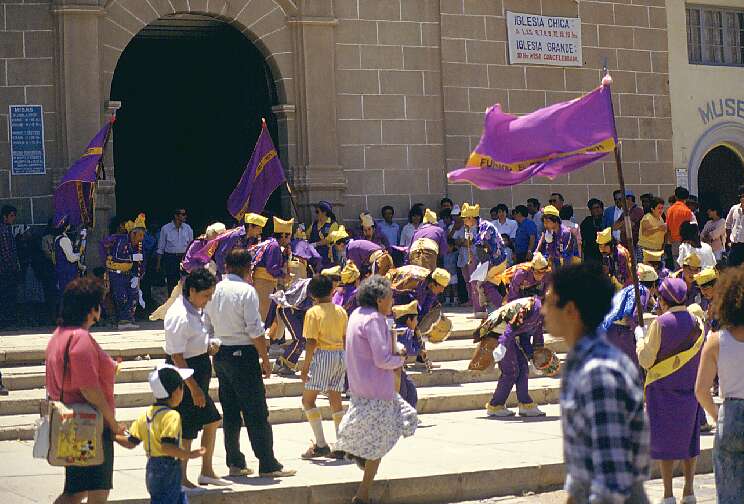
But what makes the heart of the photographer beat higher is the swirling color of the dancers! These dance groups are strictly organized into brotherhoods, with a chief, a code of ethics, and members of all ages from small children to seniors. Many are limited to male membership, while some accept women too or include both genders.
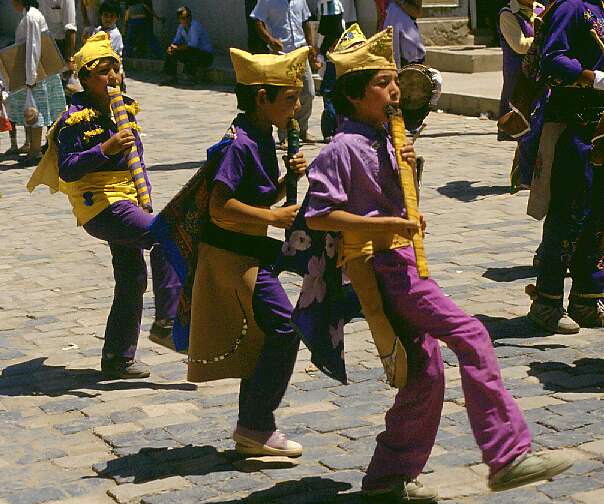
The most traditional of these dance fraternities are the "Bailes chinos". This is often mistranslated as "Chinese dances", but actually they have absolutely nothing to do with the country China! Rather, the name comes from the Quechua language, in which "china" means "lady" or "servant". The meaning is that these dance's purpose is to honor and serve the holy lady.
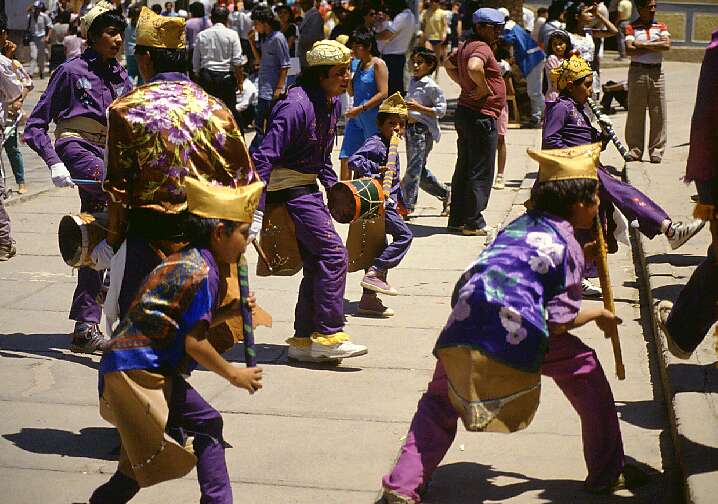
The dance of the "chinos" is an hour-long
repetitive exercise of standing on one foot while playing a high note on
the flutelike instruments, then briskly stepping on the other foot while
blowing a sharp, lower note. In this process they slowly inch forward and
backwards. It can be hypnotizing!
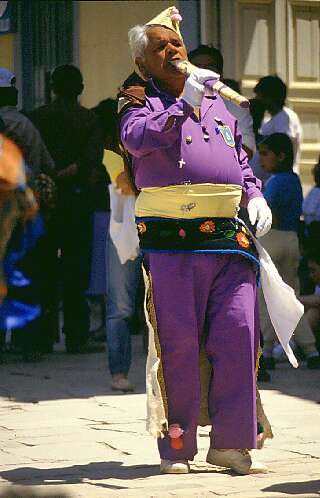 |
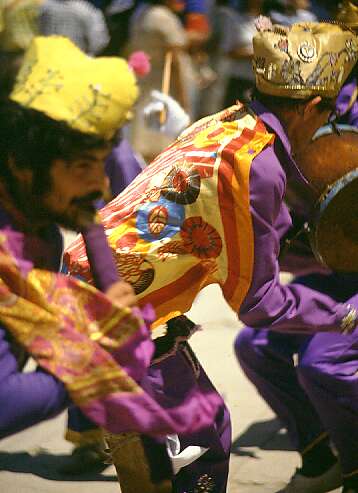 |
Every detail in the costumes, the music and the dance has its specific meaning. Some of the colors represent those of the mountains, the ore (these dances stem from mining traditions) or other colors of nature. Others again are more symbolic.
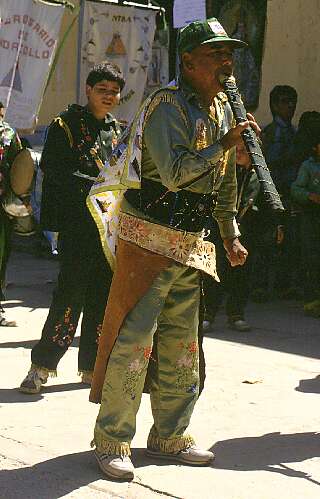
The Chinos form several brotherhoods, clearly distinguished by their colors. At first sight, their dances seem to be the same, but closer examination shows that each group does have its own details, its own customs and traditions that have evolved over centuries and been handed down from father to son, from grandfather to grandson. Family tradition is strong in the dance brotherhoods, but new members can also be accepted if their desire to take part is true and they are willing to hold the traditions high.
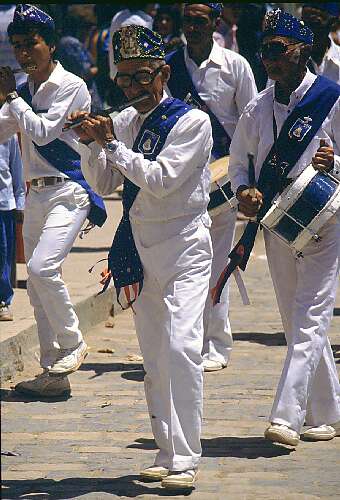 |
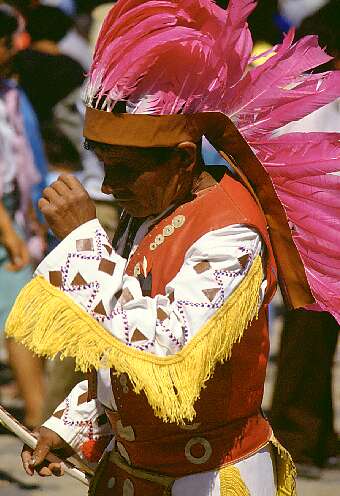 |
Later than the Chinos, other dance styles appeared, like the Turbantes and the Danzantes. Within these, often exotic models find their entrance, like the dancer on the right in a dress fashioned after some North American indians. The music of these groups is less archaic than that of the Chinos, covering the range from melodic marching music to intense rhythms played on loud percussive instruments.
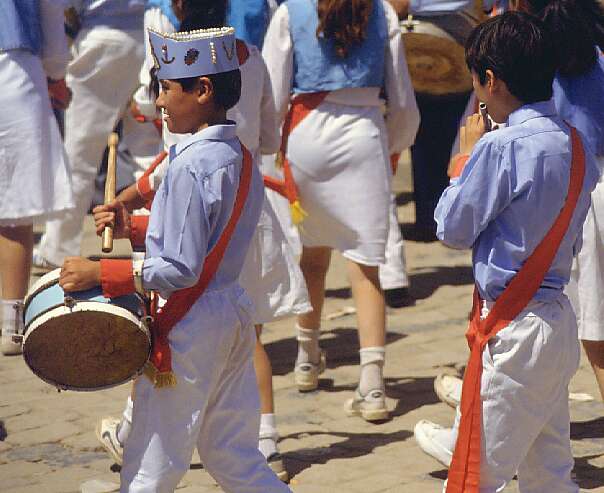
Musicians of all ages show their art.
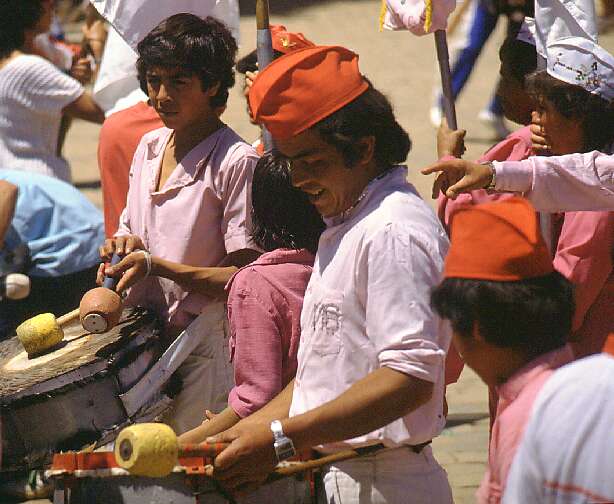
The heavy wear on the instruments shows the
enormous amount and intensity of use they get!
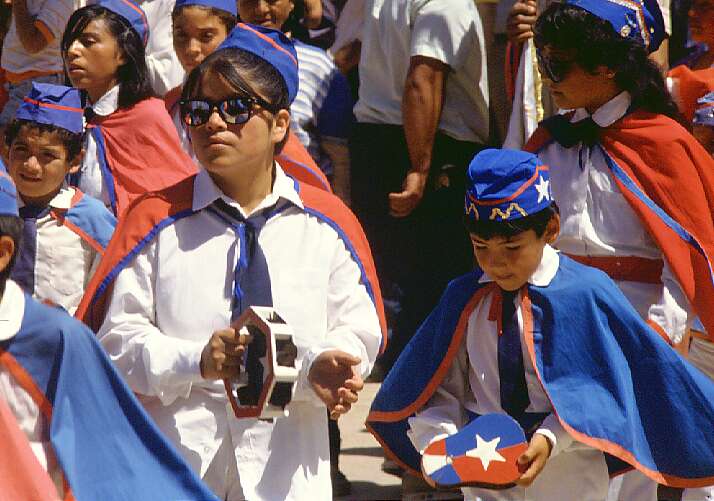
Concentration and eagerness not to miss a
beat shows on the faces of these children!
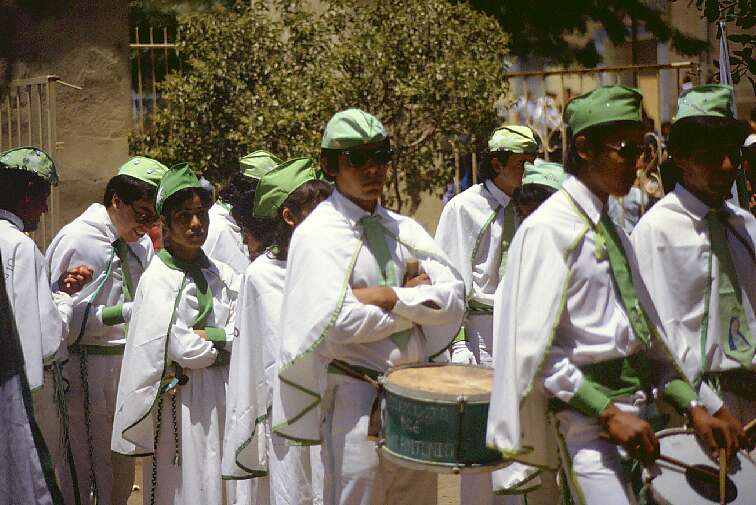
A well deserved rest while another group plays and dances.
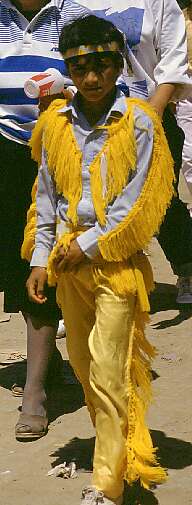 |
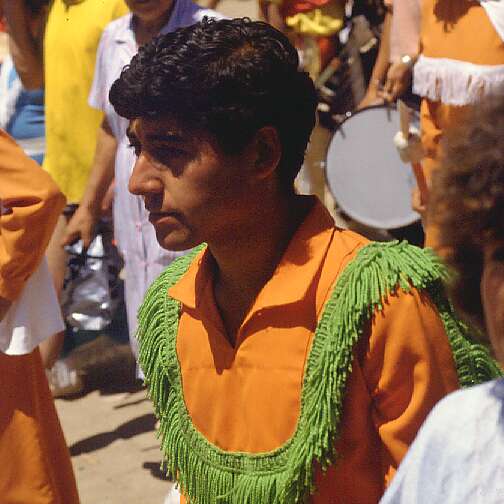 |
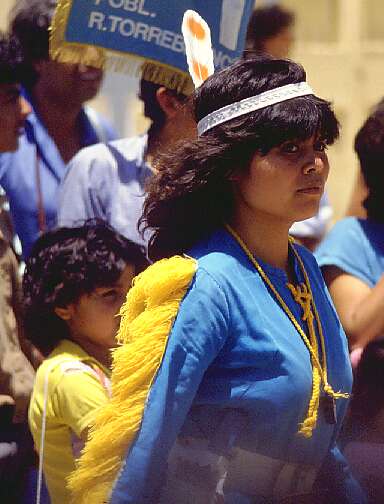 |
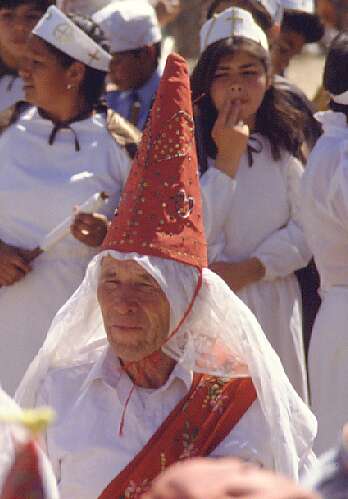 |
Young and old dancers mingle around. Sometimes
several groups dance at the same time, at other times the organization
is better and only one group dances while the others watch, chat, worship
or go shopping in the flea market stalls that pop up.
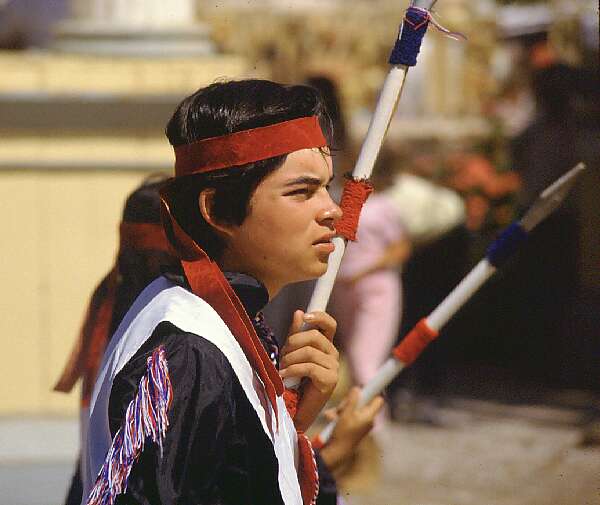
Portrait of one dancer...
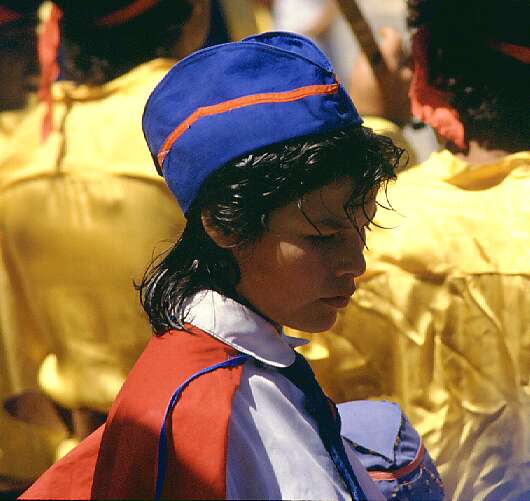
...and another...
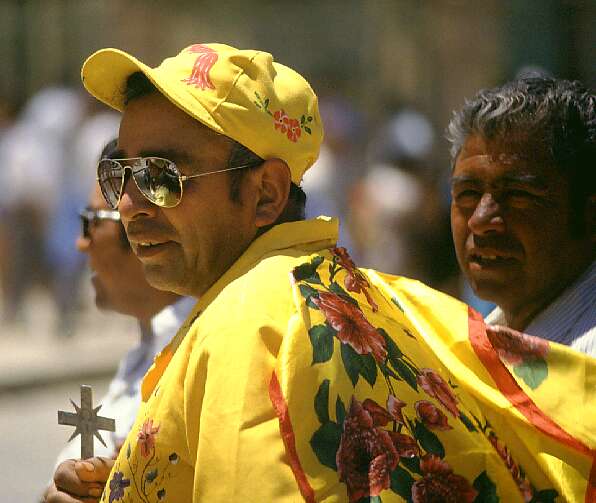
...and yet another!
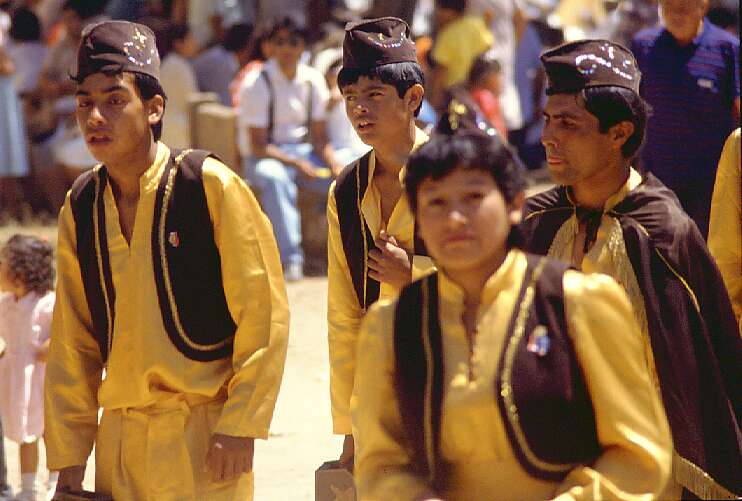
After hours of swirling dance under the hot
sun, this group is in dire need of shadow, water and relax!
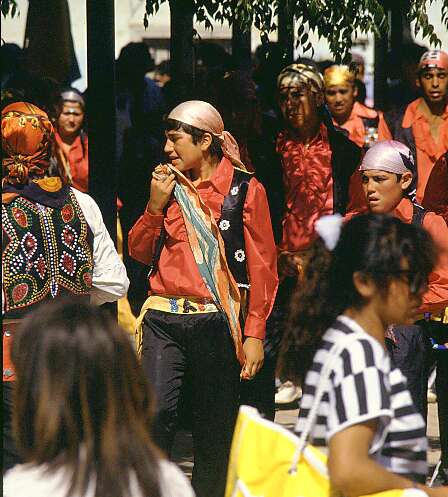
Alas, shadow is a rare commodity in Andacollo at noontime in summer. The tree in front of the Cathedral does its best efforts, but can't provide for everyone.
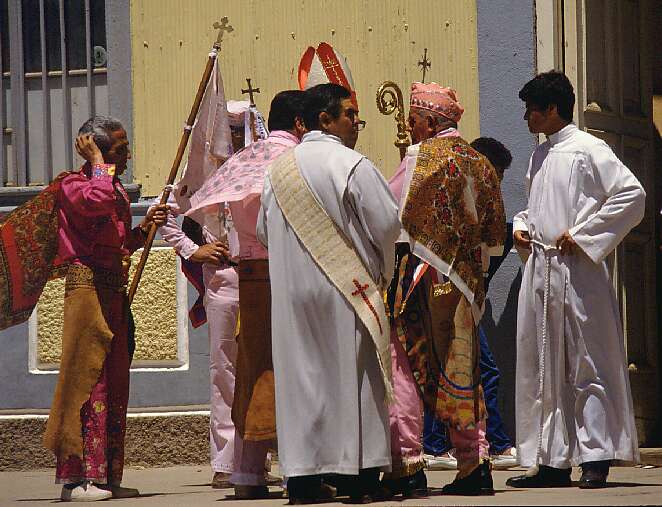
A meeting between dance chiefs and priests.
Here the final details for the main ceremony are discussed.
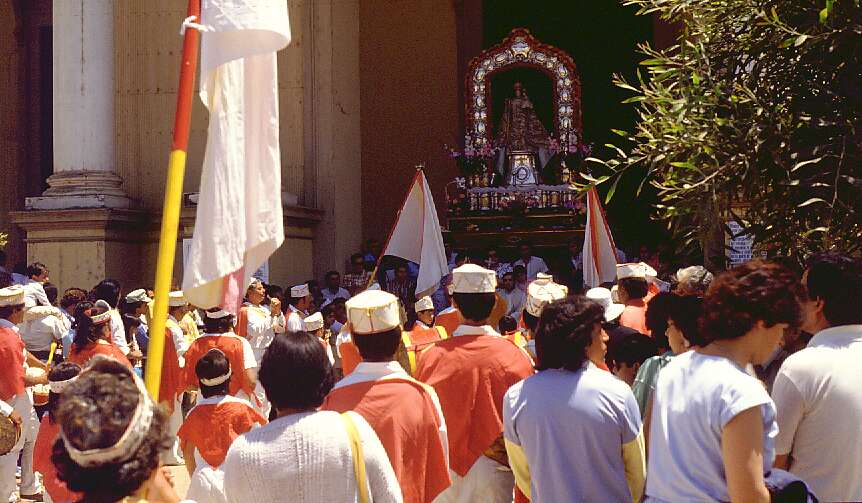
The culmination of the celebration comes when the many dance groups are finally allowed to perform their dances in front of the holy image. Since there are so many dance groups, each is allowed a strictly limited time to perform. There is often fierce competence for the time slots, which are normally assigned by time of arrival in Andacollo. This is the time when the crowd is densest, and photography is possible only by raising the camera above one's head!
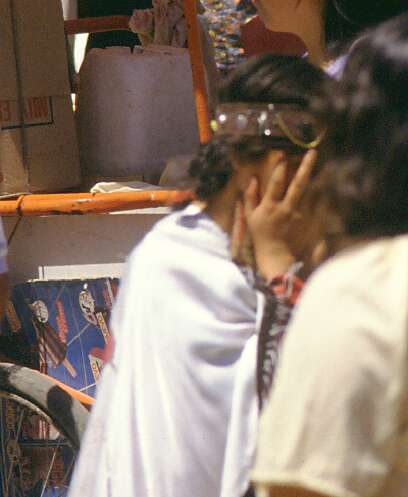
Some people are reluctant to be photographed, and hide their faces. I got a few photos in which people who took this attitude were recognizable, and those photos I did not publish in order to respect their position. This image, scanned out of the background of a slide, I picked out as an example for this page, given that the lady hid her face so well that nobody could possible recognize her...
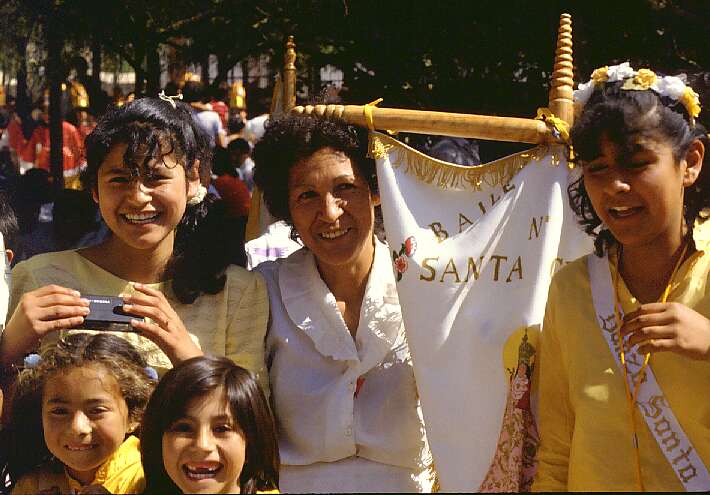
But many dancers have no problem with being
photographed. They are rightly proud of their customs, pose for the camera,
smile, and even shoot back!
This series was photographed december 26th, 1988, on Fujichrome 100, using a Chinon CE-4 camera with a Cosina 28mm f/2.8, a Pentax SMC-M 50mm f/2, and a Vivitar 75-205mm f/3.8 lenses. The slides were digitized using a Microtek Scanmaker 35T+ film scanner.
Back to Stories in photos.